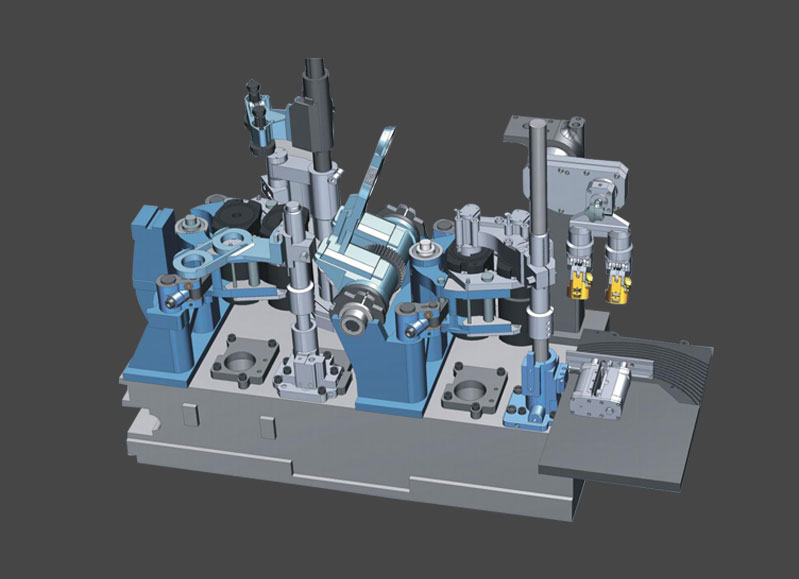Machine valves offer several advantages in machinery and mechanical systems. Here are some common advantages:
Flow Control: Machine valves allow precise control over the flow of fluids, gases, or other substances. They can regulate the flow rate, pressure, and direction of the medium, enabling efficient and optimized operation of the machinery or system.
On/Off Functionality: Many machine valves, such as gate valves and ball valves, provide reliable on/off functionality. They can fully open or close the passage, allowing for quick and efficient start-up, shutdown, or isolation of the flow.
Fluid Regulation: Control valves are specifically designed to regulate the flow rate and pressure of fluids. They can maintain consistent flow parameters within the desired range, ensuring proper functioning of the machinery and preventing any potential damage or inefficiencies.
Versatility: Machine valves come in various types, sizes, and materials, making them adaptable to different applications and operating conditions. They can be customized to meet specific requirements, such as high-pressure or high-temperature environments.
Leakage Prevention: Valves play a crucial role in preventing fluid or gas leakage in a system. When properly installed and maintained, valves provide a tight seal, minimizing the risk of leaks and ensuring safe and reliable operation.
Operational Safety: Machine valves contribute to operational safety by allowing control over the flow and pressure of potentially hazardous substances. They can be used to isolate sections of a system, redirect flows, or release pressure in a controlled manner, reducing the risk of accidents or equipment damage.
Durability and Reliability: Valves are typically constructed from robust materials such as stainless steel, brass, or cast iron, providing durability and long service life. When installed and maintained correctly, valves can withstand harsh operating conditions, resist corrosion, and operate reliably over extended periods.
Maintenance and Service: Machine valves are often designed for easy maintenance and service. They can be disassembled, repaired, or replaced without extensive downtime, minimizing disruptions to the machinery or system.
It's important to note that the advantages of machine valves can vary depending on the specific type of valve, application, and operating conditions. Proper selection, installation, and maintenance of valves are crucial to maximize their benefits and ensure optimal performance in a given machinery or system.
Maintaining
machine valves is essential to ensure their proper functioning, prevent leaks, and extend their lifespan. Here are some general maintenance practices for machine valves:
Regular Inspection: Periodically inspect the valves for any signs of wear, corrosion, or damage. Look for leaks, cracks, or loose connections. Check the valve body, seals, stems, and actuators for any abnormalities.
Lubrication: Valves with moving parts, such as ball valves or butterfly valves, may require lubrication. Follow the manufacturer's recommendations regarding the type and frequency of lubrication. Apply lubricant to the appropriate areas to reduce friction and ensure smooth operation.
Cleaning: Keep the valve and its surrounding area clean. Remove any dirt, debris, or sediment that may accumulate on the valve. Be cautious not to introduce foreign particles into the valve during cleaning.
Tightening: Check the valve connections, such as bolts, nuts, or flange joints, to ensure they are properly tightened. Over time, vibrations or temperature changes may cause these connections to loosen, leading to leaks or reduced performance.
Seals and Gaskets: Inspect the valve seals and gaskets for wear or deterioration. If necessary, replace damaged or worn seals and gaskets to maintain a proper seal and prevent leaks.
Actuator Maintenance: If the valve has an actuator, inspect and maintain the actuator as per the manufacturer's guidelines. This may include checking the air pressure, lubricating moving parts, or testing the actuator's functionality.
Testing and Calibration: Periodically test the valve's operation to ensure it opens and closes correctly. Verify that the valve is maintaining the desired flow rate and pressure. If needed, recalibrate the valve or adjust the actuator settings to ensure accurate performance.
Corrosion Protection: If the valve is exposed to corrosive environments, consider applying protective coatings or using corrosion-resistant materials. This can help prevent corrosion and extend the valve's lifespan.
Documentation and Records: Maintain records of valve maintenance, including inspection dates, repairs, replacements, and any other relevant information. This documentation can help track the valve's performance and aid in future maintenance planning.



 English
English 中文简体
中文简体
.jpg?imageView2/2/w/569/h/569/format/jp2/q/75)
(elmhart).jpg?imageView2/2/w/569/h/569/format/jp2/q/75)
.jpg?imageView2/2/w/569/h/569/format/jp2/q/75)





 May 02,2024
May 02,2024
 +86-575-87637902
+86-575-87637902 +86-13606564271
+86-13606564271
 No. 20, Sanfeng Road, Diankou Town, Zhuji City, Zhejiang Province, China
No. 20, Sanfeng Road, Diankou Town, Zhuji City, Zhejiang Province, China